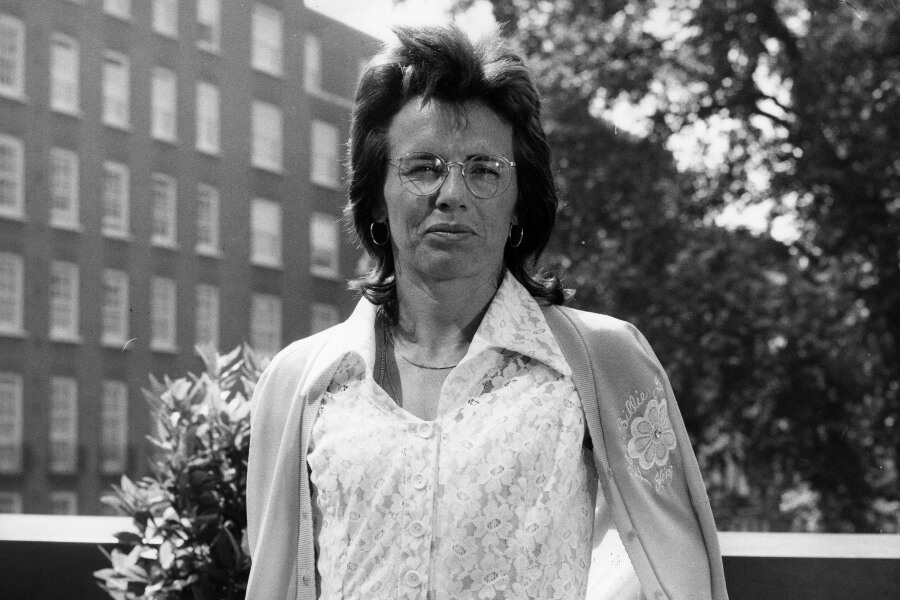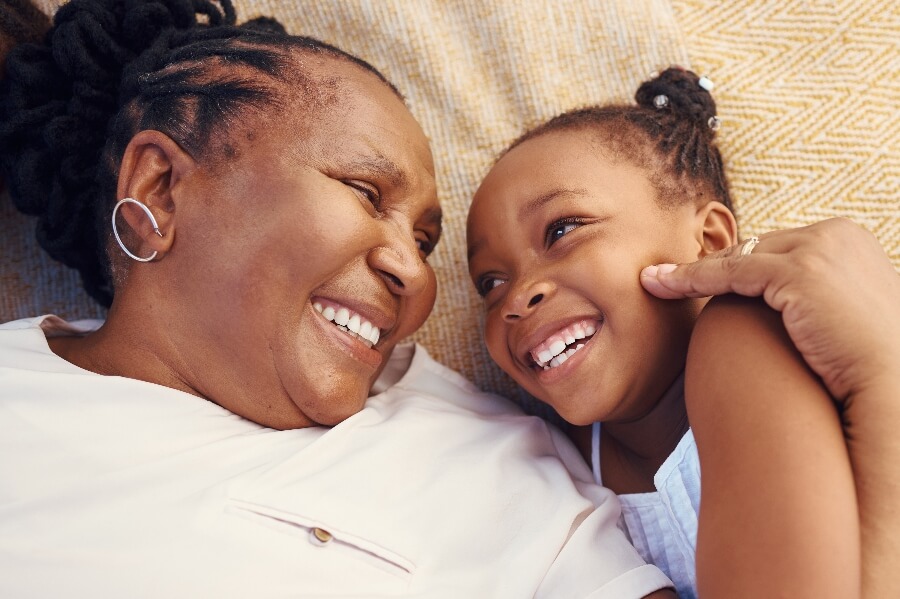As the U.S. Open gets started in New York, I have wildly mixed emotions. Excited, yes. (Something to watch besides French cop shows!) Nostalgic. (My highest ranking was 13 in Southern California, so tennis was a big part of my younger years.) Curious. (Why are so many women sizzling, then fizzling?) To be honest, I was never passionate about playing the game, but I’ve always enjoyed watching.
Billie Jean King joked that there was a time women players would have killed to get press coverage.
Happily, as many people now are interested in watching the women pound and slice as they are the men. The women hit harder than ever, and they look damn good doing it. Yes, fashion has played a role in the added attention. When Anne White—currently the teaching pro at the Beverly Hills Tennis Club—wore a clingy full-length bodysuit at Wimbledon in 1985, it made news everywhere. She was told to “dress more appropriately” when the match continued after a delay. And if you think looks don’t matter, know that when an Italian named Camila Giorgi recently upset six higher ranked players to win a tournament in Montreal, this kind of notice hit the internet.
“Camila Giorgi wowed the tennis world by swooping to the Canadian Open title despite being unseeded for the tournament. But the Italian is already well known to her 471,000 Instagram followers as she combines her day job with life as a lingerie model.”
Think how Serena Williams dresses on the court and you visually get how women’s tennis has changed. But there are bigger changes, equal pay likely the most important. Thank you, Billie Jean King and Gladys Heldman for that. (The latter made the deal with Virginia Slims for women to have their own professional circuit.) Winners of both genders now receive almost $2.5 million at the U.S. Open, and being one of the last 32 earns players $163,000. Where else, metaphorically, can you lose in the first round and take home $58,000?
Read More: Chris Evert Dishes Out Advice On Hope, Respect—and Menopause
Stress Takes a Toll
Subsequently, however, the negative consequences have also increased, including stress, injuries, and less camaraderie among the women. “I do think that the pressure in general is much greater, and the sport less fun, than when I played,” says former pro and tennis psychologist Julie Anthony. “Tournament and exhibition promoters want them to play more, agents want them to play more, and parents are perhaps too naive or too carried away with the financial opportunities offered their kid. I really think social media is toxic and only adds to the immense pressure players feel performing for their public.”

All that pressure to play—and train—more is taking equal tolls on bodies. Tennis fans now buy expensive tickets, only to learn that their favorites—women as well as men—may not be playing. Simona Halep skipped or dropped out of several tournaments this year due to a calf injury, and Serena Williams has just dropped out of the Open due to a hamstring issue. “I don’t ever recall taking a bathroom break or calling an injury timeout for a questionable `injury,'” says Anne White. “There are many players who use multiple injury timeouts to disrupt their opponents’ momentum and that needs to stop. Injury timeouts are never called by the player who is winning the match unless they fall on the court.”
Then there is the pressure on the mind, as well. Even non-tennis fans likely heard about Naomi Osaka’s (currently ranked #2) saga this year. It began at the French Open, which fined her for refusing to attend mandated press conferences, prompting her to drop out. Reactions were initially mixed. Billie Jean joked that there was a time women players would have killed to get press coverage. Others claimed Osaka was perhaps embarrassed, having unexpectedly lost the previous two tournaments. But when she brought mental illness and athletic anxiety into the discussion, sympathy took over. Next thing we knew, she was on the cover of magazines, writing essays, having a bowl named after her at Sweetgreen, and lighting the torch at the Olympics.
The Revolving Game at the Top
Which brings me to my next thought—and I tread gently here. Osaka lost unexpectedly in the third round at the Olympics. The current number one, Ashleigh Barty, also was defeated early. There has been a revolving list of number ones in women’s tennis over the past several years. This can be seen as a positive, and a nice break from the male troika that have dominated for more than a decade. “I think it’s very exciting,” says longtime tennis journalist Joel Drucker, “that so many women are playing great tennis and with diverse styles, some with power, some with touch.”
You’ll see them get right to the brink of winning and then they can’t do it.
Agreed. But I also wonder if something else is at “play,” of the interior variety, and not exactly what Osaka has suffered with. Angelique Kerber had a great streak and became number one for at least a year, then faltered for several after. (She’s bouncing upward now again) Caroline Wozniacki and Garbine Muguruza were others. America’s Sofia Kenin was top of the heap for a moment, but has had a disastrous past year. Sloane Stephens won the U.S. Open a few years back, but has done little since. Bianca Andreescu won the Open in 2019, and since then, partly felled by injury and whatever else, has become almost irrelevant.
Right now, Ash Barty is number one, but Chris Evert, when asked at Wimbledon why Barty tends to lose at least one set in her matches, said, “she isn’t arrogant enough.” Which I found fascinating. “I know a lot of players lose because they don’t think they deserve to win,” said Billie Jean King in a New Yorker interview recently. “You’ll see them get right to the brink of winning and then they can’t do it. Why? Something’s going on there. So they need to find out. I always ask players, have you gone to therapy yet? And I would say ninety-nine per cent of the time they say no.”
Where’s the Ambition Among the Best Women’s Tennis Players Now?
Those who practice therapy may agree. Dr. Anna Fels, a psychiatrist who wrote a book on ambition, says, “Despite all the strides that feminism has made, there is still much room for improvement in women’s status in professions previously reserved for men—professional sports being one of them. Because of the open competitiveness, aggression, and ambition of these women, (traits for which men are praised) they are often seen as less feminine than their non-athletic peers.”
Let’s hope for fewer entourages of agents and trainers and more shared sisterhood.
Is it possible that many of us girls—who were told by our moms that we should not beat the boys—still suffer? Yes, Billie Jean did us all a favor (again)—by beating Bobby Riggs. But women pros are not playing against men, and something inside many—that lack of arrogance?—may still keep consistency at bay.
With the Williams sisters’ reign coming to a close, eyes now look to the future generation: American Coco Gauff has won many hearts—and matches—at 17, but is already slumping a bit. A 16-year old Brit named Emma Raducanu created a momentary sensation at Wimbledon—until she hyperventilated and retired. John McEnroe took some heat when he said Raducanu couldn’t handle the pressure.
Well, a lot of questions will be asked at the 2021 Open, which hopes for a full field of healthy potential winners. I am pulling for Osaka, who seems to be a good and caring person. She donated all her winnings in the recent Cincinnati tournament to the victims of Haiti earthquake and, as Anne White says, “she’s very kind and has she’s been extremely nice to the kids and members here. And let’s remember, she’s only 23.”
And I am hoping for fewer entourages of agents and trainers, and more shared sisterhood. But that may be a thing of the past. Chris Evert was asked, by her co-host at 2021’s Wimbledon, how she and long-time rival Martina Navratilova managed to end up friends. “Because at the end of the day,” she said with a laugh, “we’d be the last two in the locker room.” How can that camaraderie develop if the last players in the locker room are always changing?
Read More: Never Too Late: Former Olympic Swimmer Made a Stunning Comeback in Her 50s





















0 Comments